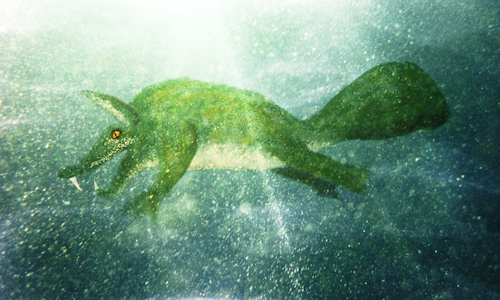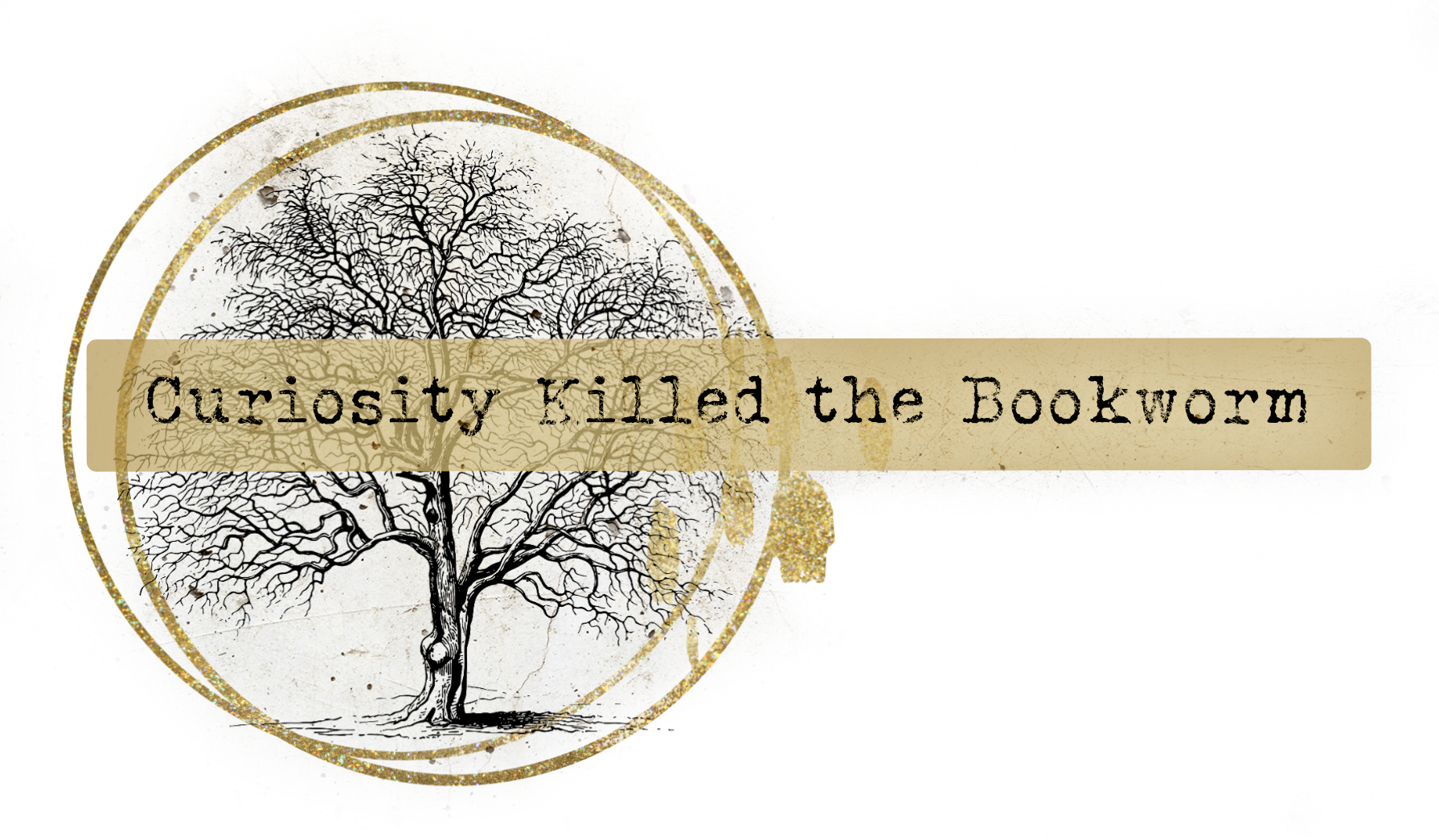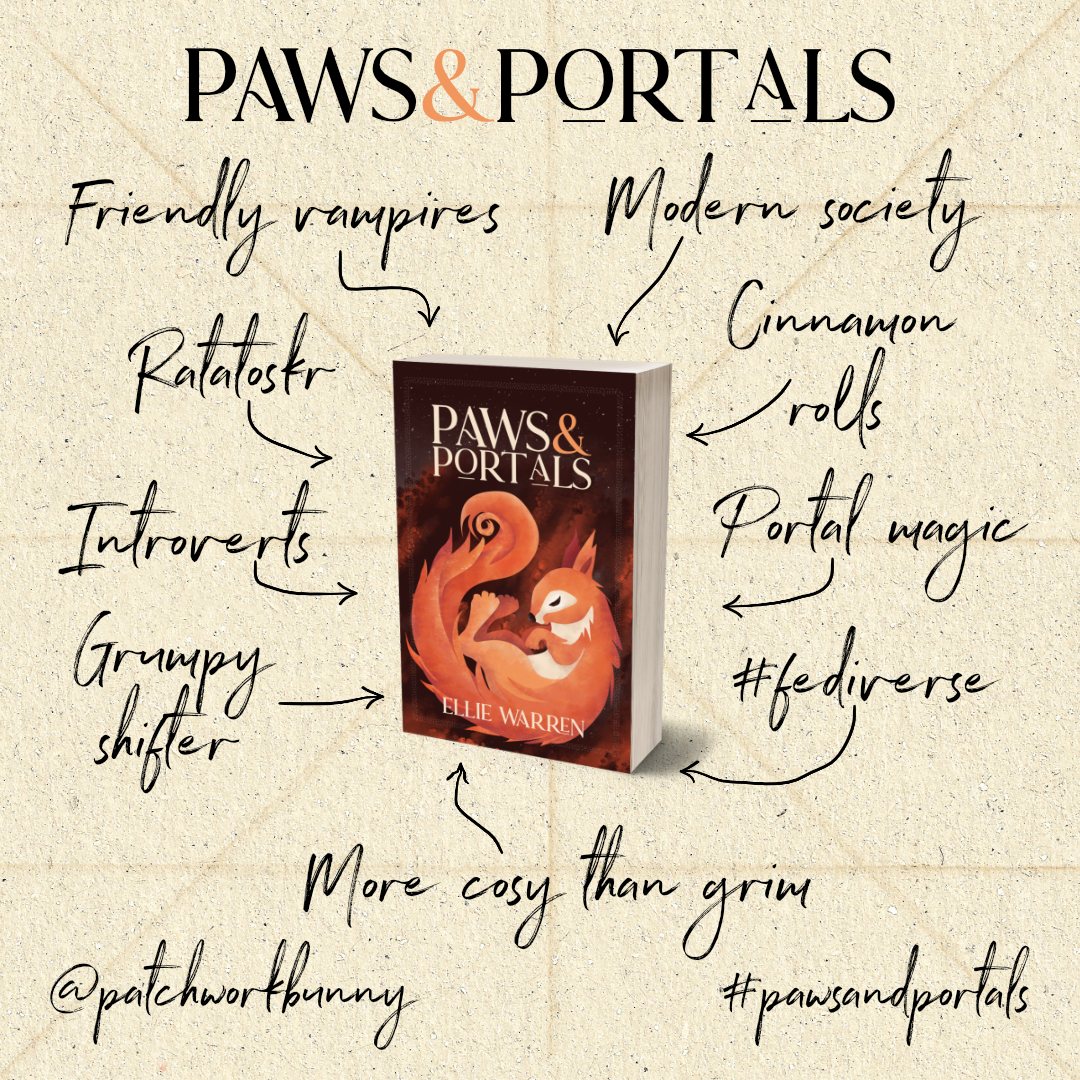I didn’t get very far last time I started an A-Z of mythology feature here on the blog. I was far too invested in finding and reading books to go with each post. This time round, I’m going to choose some of the more obscure creatures that you may think authors have just made up. OK, someone made them up in the distant past, but they were probably trying to scare the locals off wandering off in the night/woods/with dark handsome stranger and not writing a novel. If I get through 26 posts, I will cycle round and might cover more well-known myths alongside book recommendations.
afanc : cattle-devouring aquatic monster in Celtic countries, from Celt. *abankos “water-creature,” from *ab- “water” (cf. Welsh afon, Breton aven “river,” L. amnis “stream, river,” which is of Italo-Celtic origin).
To my knowledge, I’ve only encountered this creature in the October Daye series where it’s described as a sort of crocodile/beaver cross. Also known as the Addanc or Abhac, its origins are Welsh and dates back to the Middle Ages. All entomological signs point to it being a giant beaver; which isn’t that scary although they could probably do a lot of damage with those teeth. However there are also descriptions of it being a crocodile, water demon or dwarf (how you can get a dwarf and giant beaver mixed up, I don’t know).
There’s one snag with this feature. Finding images to illustrate these weird and wonderful creatures. So I drew my own, don’t laugh…

The poor Afanc of the River Conwy was blamed for the flooding in the area and a plot was hatched to rid Llyn-yr-Afanc of him. Can a mythical beast have no peace? Like many Celtic stories, there is iron and a pretty girl involved so you can see why he might have been adopted as fae. You can read a version of the folklore at Historic UK. If you do happen to see an angry Afanc, try singing him a soft song and he will fall asleep. He now appears to be living up Mount Snowdon so hikers should take care when passing Lake Glaslyn; there have been Nessie like sightings in the lake.
Did you know Wales has its very own version of Noah’s Ark? The Anfac of Lake Bala got a bit over excited and broke the banks with all his thrashing around. Dwyfan and his wife, Dwyfach, were lucky enough to have a boat on hand and bundled aboard two of each kind of living thing. When the floods subsided, Britain was born.
In Arthurian legend, the Afanc of Llyn Barfog was a bit more ferocious, eating anyone who came near his home. So depending on who you ask, either Pryderi (the Welsh Sir Percival, who let’s face it, has a track record with mythical monsties) or King Arthur himself (much more like the tourist board making out Arthur waz ‘ere) was brought in to sort the Afanc out. The knight in question bound the Afanc in magical chains and used his faithful steed to hoist him out the water. The horse pulled so hard (really those knights barely did any work) that he left a hoof print in the rock (now known as Carn March Arthur). There are two endings, one happily ever after for the Afanc and the other, imminent death. As most the stories end with him getting a nice new home in one of the lakes of Snowdonia, I like to think they let him live.
Interestingly, a lot of these Welsh tales may have been concocted by Iolo Morganwg (also known as the less mysterious sounding Edward Williams) who was a bit of a literary forger. However the basis of The Myvyrian Archaiology of Wales came from existing folklore and he probably only continued the great tradition of livening things up a bit and adding influences from other cultures. I think the bards of the past would have been proud of him.
The Afanc did get a guest appearance on BBC’s Merlin however the special effects department weren’t kind. I like to imagine him as an oversized puppy, a bit clumsy but not malevolent in nature. When you’re a giant, you’re bound to break some things or displace a bit of water here and there.
Have you encountered the Afanc in your literary travels?
Related posts
5 Comments
Leave a ReplyCancel reply
This site uses Akismet to reduce spam. Learn how your comment data is processed.



![[gifted] "Love comes as swift as the sting of a bee and is as sweet as honey."
🐝🐝🐝
Magic and bees? I'll be finding out. Thanks @orbitbooks_uk for the review copy of The Honey Witch by Sydney J. Shields! It came in the prettiest of packaging too, with a little jar of honey.
🍯🍯🍯
#bookstagram #bookpost #booknerdigans #thehoneywitch #fantasybooks #bookblogger](https://www.curiositykilledthebookworm.net/wp-content/plugins/instagram-feed/img/placeholder.png)


This was fascinating, I've never heard of this mythological creature before.
And I think the picture is great 🙂
Your afanc looks much better than the Merlin one did 😉 I thought theirs looked a bit like the Rancor from Star Wars.
Really fascinating post! 🙂 Looking forward to the series.
I love your drawing! Very good!!!! I hadn't heard of this amazing creature before!
Fabulous idea – and very interesting
Ooooh… I'm so looking forward to following this feature.
I've never encountered the afanc and am happy to learn a bit about him (and I love your illustration!)